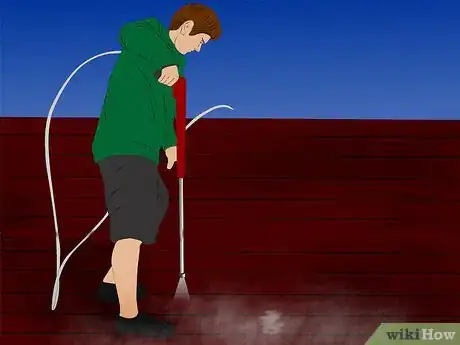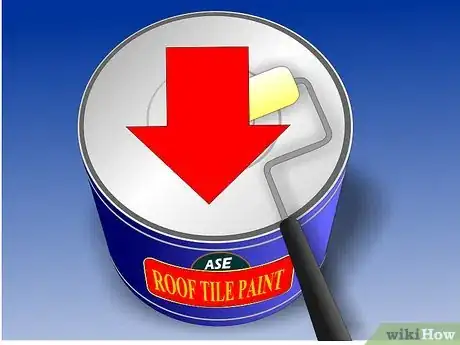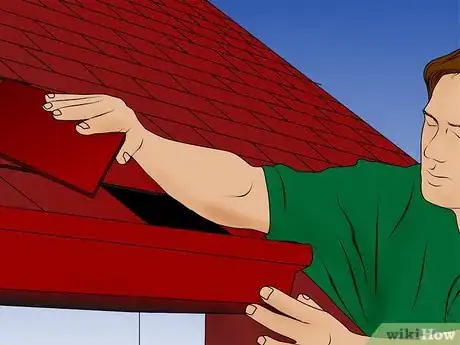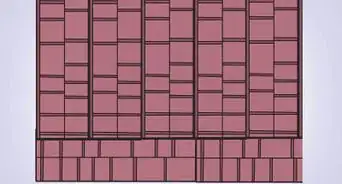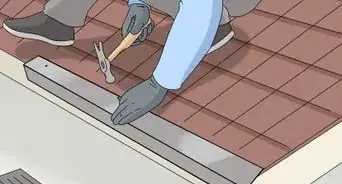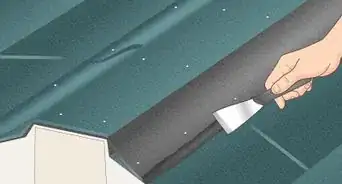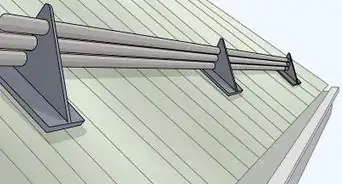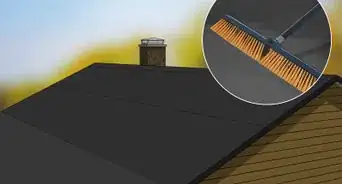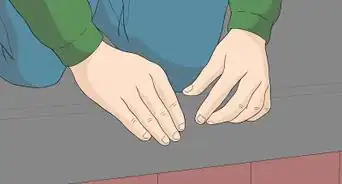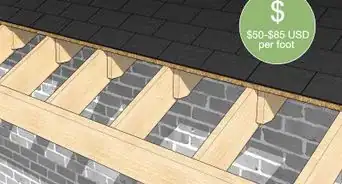wikiHow is a “wiki,” similar to Wikipedia, which means that many of our articles are co-written by multiple authors. To create this article, 11 people, some anonymous, worked to edit and improve it over time.
This article has been viewed 99,926 times.
Learn more...
Tile roofs provide several significant advantages over other types. Tile constructions are resistant to pests and can withstand harsh weather conditions. They also have superior thermal properties that reduce ambient temperatures on the roof deck. Tile roofs come in a broad array of colors that can complement the appearance of your home. But perhaps most significantly, a properly installed tile roof can last more than 100 years with only modest care. If you need to know how to maintain a tile roof, follow these guidelines.
Steps
-
1Inspect your tile roof periodically. Tile roofs are extremely durable but still have to be inspected occasionally. Look for cracked or chipped tiles. Damaged sections have to be replaced immediately. Take appropriate measures to reduce the effects of other issues with your tile roof.
-
2Do NOT pressure wash your roof. Read http://roofcoatingscam.com/is-it-safe-to-pressure-wash-a-roof/ to find out why and the damage it can cause. Effectively, the only way to safely clean your roof and the tiles on it is to use a 6" trowel and wire brush and do it manually by hand. Pressure washing can erode the concrete tiles or penetrate through into the felt below and cause flooding in the roof space.Advertisement
-
3Refurbish your roof. After you wash your roof and let it dry, you may want to take additional steps to protect and rejuvenate the surface.
- Buffing: In time, tile produces a chalky deposit on its surface. This is called efflorescence, and is caused by a natural chemical reaction in manufactured concrete. Efflorescence dulls the sheen of the surface, but in no way affects the structural integrity of the tile. Buff tiles with a clean rag.
- Priming: Coat your roof with a clear alkyd primer. This gives the surface a protective sheen that reflects the sun's rays, keeping your home cooler. Primers also help fill the porous surface of concrete, making it repel water efficiently.
- Painting: Use a heavy-duty acrylic paint. The polymers provide a durable, waterproof finish while improving the appearance of the roof. Some paints also are mildew-resistant. While gently buffing tile with fine sandpaper helps paint adhere to the surface better, the practice is impractical when painting a roof. Use a sprayer for the job, being careful not to paint other parts of the structure.
- Sealing: Applying a clear acrylic sealant is a key part of a roof-restoration project. Use a sealant to help restore the color and durability of existing tile.
-
4Replace damaged tiles immediately. Chipped, cracked or broken tiles should be removed as soon as they're discovered. Broken tiles can compromise the roof's ability to withstand exposure to rain and sun. To replace a tile, slide a flat bar under the 2 tiles above the broken piece. Put another flat bar under the tile to the left of the damaged one. Gently pry the bars upward and remove the broken tile. Before putting in a new tile, replace the roofing underlayment. When you've replaced the tile, pull out the left-hand bar first, then the one above.
-
5Walk on your tile roof very carefully. You'll have to go up on your roof periodically to clean the surface and make repairs. Tile is fragile, and you can severely damage your roof by walking on it. The key to walking on a tile roof is distributing your weight over and area wider than your foot. To do this, experienced workers lay down plywood walkways, treated with foam backs, when moving across a tile roof. Never walk along the delicate edges of tile or along specially cut tiles that are difficult to replace.
Community Q&A
-
QuestionWhat are the little holes running along the bottom of tile roofs?
 Community AnswerThat is called the bird stop, it allows for water to drain out from underneath the tiles.
Community AnswerThat is called the bird stop, it allows for water to drain out from underneath the tiles. -
QuestionWhat is the minimum pitch for a tile roof?
 Ryan MccutchanCommunity AnswerThe minimum slope or pitch for a tile roof will depend on the exact profile of tile you are using. The lowest any tile can usually go is about 15 degrees, but some must be steeper. Check with the manufacturer as to their recommendation.
Ryan MccutchanCommunity AnswerThe minimum slope or pitch for a tile roof will depend on the exact profile of tile you are using. The lowest any tile can usually go is about 15 degrees, but some must be steeper. Check with the manufacturer as to their recommendation. -
QuestionWhat is the main cause of leaks on a tile roof?
 Community AnswerCracked mortar allows a tile (or more often, several) to break loose, exposing areas near the top to water flow. As with any leak, try looking from underneath your roof to find the precise source/location.
Community AnswerCracked mortar allows a tile (or more often, several) to break loose, exposing areas near the top to water flow. As with any leak, try looking from underneath your roof to find the precise source/location.
Things You'll Need
- Replacement tiles
- Pressure washer
- Plywood walkway (with foam-treated underside)
- 2 flat bars
- Clear alkyd primer
- Acrylic paint
- Clear acrylic sealant
- Clean rags
- Bleach

